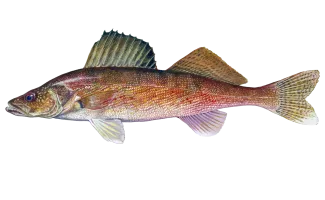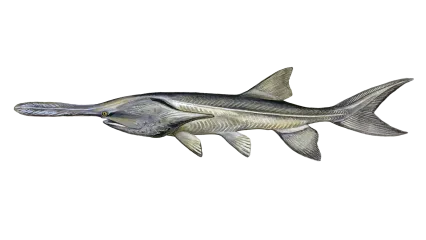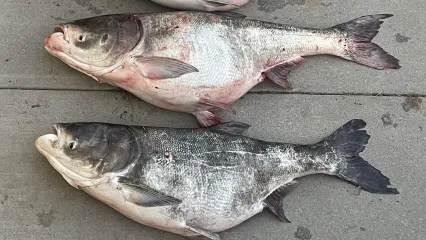
Description
Distribution originated from introductions made during the early 1950s in Canton and Tenkiller lakes. Since that time, adult walleye have been trapped (primarily from Canton Lake), their eggs taken by hand stripping, fertilized, and hatched in state fish hatcheries. Most major lakes in Oklahoma have been stocked. The best populations are in the western half of the state.
Oklahoma is fortunate to have these unique species of the perch family in many of its lakes. To identify them, first look at the spiny dorsal fin. The walleye will have no spots on this fin; the sauger will have distinct spots; and the hybrid of the two species, the saugeye, will have spots and bars in the webbing of its spiny dorsal fin. The color of the fish and the presence or absence of the cheek scales may also help identify the difference.
Facts:
- Although walleye are not easy to catch, they are definitely worth the effort. Walleye filet is considered by gourmets to be among the best table fare. Because of the peculiar light-gathering structure of their eyes, walleye seek deep water during the day to avoid the bright sun, feeding mostly at night.
- Trolling with deep-diving crankbaits along shoreline drop-offs is a good method for locating fish. Once one is caught, work the area thoroughly with crankbaits, jigs or jig-and-minnow combinations. Tailwater fishing also can be productive, especially during periods of heavy flow.
- Other tips to keep in mind when walleye and saugeye fishing include:
- Avid walleye anglers should check out Lake Waurika. Using stick baits and jig and grub combinations along the rip-rap of the dam is very productive in late February and March. Walleye up to nine pounds have shown up in recent electrofishing surveys.
- Try fishing for walleye from the rip-rap at Lake Hefner during the months of March and November. These are the most productive times for walleye anglers in this lake.
- Legal-sized saugeye (>18”) are often caught during the winter at Lake Thunderbird. The best time is from dusk until about two hours after sunset. Try using a shallow-running minnow bait retrieved very slowly.
- Saugeye have rejuvenated fishing at lakes Ft. Cobb, Tom Steed, and Lawtonka - all historically prime walleye waters. Recent netting samples confirmed that saugeye numbers now rival peak walleye abundances in the “heydays” at each of these lakes.
- Anglers desiring to catch both striped bass and saugeye in the same lake should plan a visit to lakes Carl Blackwell and Sooner. Both lakes have abundant populations of both species and high percentages of large fish.
Habitat
Walleye tend to congregate near the bottom on sand bars or near ledges and drop-offs.
Food sources: Insects, larvae, nightcrawlers, crayfish, snails, and small fish.
Life Cycle
Walleye spawn in early March when water temperatures reach 45 to 50 degrees F. Some 25,000 to 50,000 eggs per pound of body weight are produced each year by a single female. Fertilization occurs when eggs from the female and milt from the male are released simultaneously. Eggs fall between crevices in rock "rip-rap" along dams.


